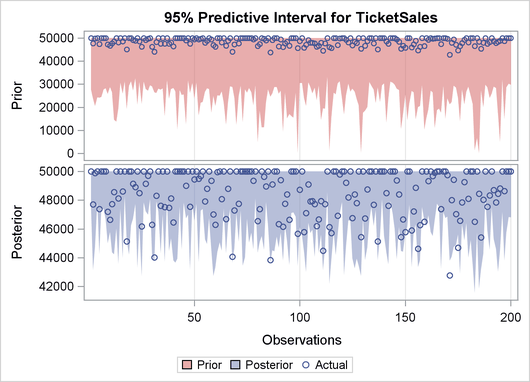The QLIM Procedure
- Overview
-
Getting Started

-
Syntax

-
Details
 Ordinal Discrete Choice ModelingLimited Dependent Variable ModelsStochastic Frontier Production and Cost ModelsHeteroscedasticity and Box-Cox TransformationBivariate Limited Dependent Variable ModelingSelection ModelsMultivariate Limited Dependent ModelsVariable SelectionTests on ParametersEndogeneity and Instrumental VariablesPanel Data AnalysisBayesian AnalysisPrior DistributionsAutomated MCMCMarginal LikelihoodStandard DistributionsOutput to SAS Data SetOUTEST= Data SetNamingODS Table NamesODS Graphics
Ordinal Discrete Choice ModelingLimited Dependent Variable ModelsStochastic Frontier Production and Cost ModelsHeteroscedasticity and Box-Cox TransformationBivariate Limited Dependent Variable ModelingSelection ModelsMultivariate Limited Dependent ModelsVariable SelectionTests on ParametersEndogeneity and Instrumental VariablesPanel Data AnalysisBayesian AnalysisPrior DistributionsAutomated MCMCMarginal LikelihoodStandard DistributionsOutput to SAS Data SetOUTEST= Data SetNamingODS Table NamesODS Graphics -
Examples

- References
Example 29.8 Bayesian Modeling
This example illustrates how to use the QLIM procedure to perform Bayesian analysis. The generated data mimic a hypothetical scenario in which you study the number of tickets sold for a sports event given the probability of the hosting team winning and the price of the tickets. The following statements create the dataset:
title1 'Bayesian Analysis';
ods graphics on;
data test;
do i=1 to 200;
e1 = rannor(8726)*2000;
WinChance = ranuni(8772);
Price = 10+ranexp(8773)*4;
y = 48000 + 5000*WinChance - 100 * price + e1;
if y>50000 then TicketSales = 50000;
if y<=50000 then TicketSales = y;
output;
end;
keep WinChance price y TicketSales;
run;
The following statements perform Bayesian analysis of a Tobit model:
proc qlim data=test plots(prior)=all; model TicketSales = WinChance price; endogenous TicketSales ~ censored(lb=0 ub= 50000); prior intercept~normal(mean=48000); prior WinChance~normal(mean=5000); prior Price~normal(mean=-100); bayes NBI=10000 NMC=30000 THIN=1 ntrds=1 DIAG=ALL STATS=ALL seed=2; run;
Output 29.8.1 shows the results from the maximum likelihood estimation and the Bayesian analysis with diffuse prior of this Tobit model.
Output 29.8.1: Bayesian Tobit Model
Output 29.8.2 depicts a graphical representation of MLE, prior, and posterior distributions.
Output 29.8.2: Predictive Analysis by Observation Number
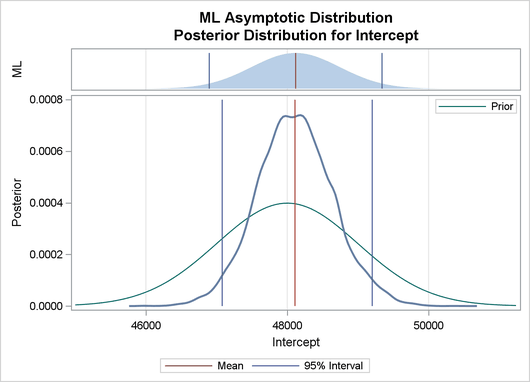
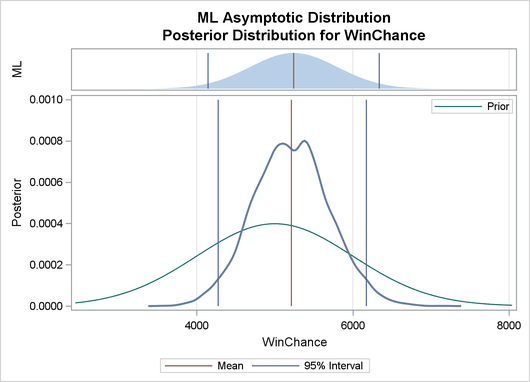
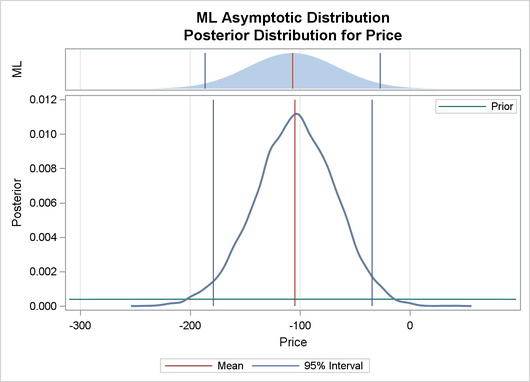
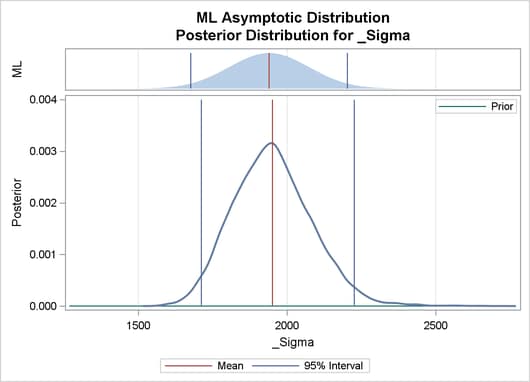
The validity of the MCMC sampling phase can be monitored with Output 29.8.3.
Output 29.8.3: Predictive Analysis by Observation Number
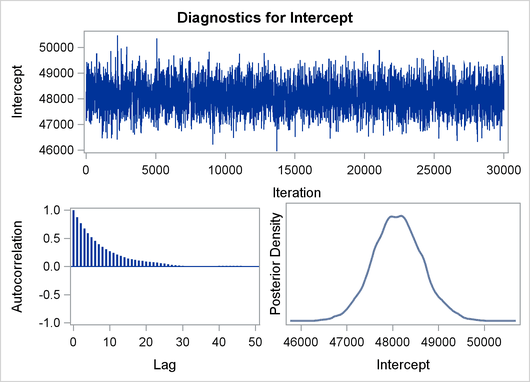
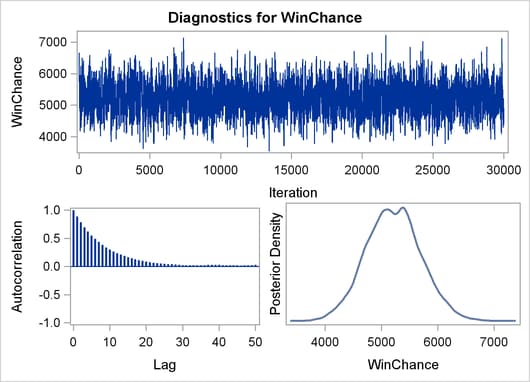
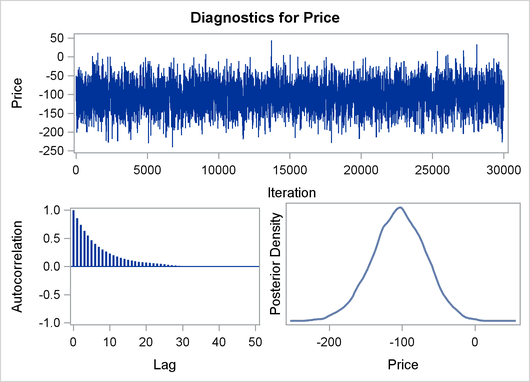
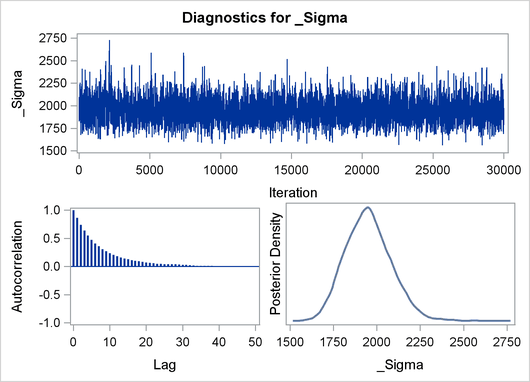
Finally the prior and the posterior predictive analyses are represented in Output 29.8.4
Output 29.8.4: Predictive Analysis by Observation Number
